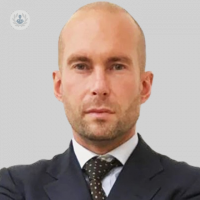A guide to congenital penile curvature (CPC)
Written in association with:Congenital penile curvature (CPC) is a condition that can affect men from a young age. While it is often not discussed openly, it is essential for those who may be affected to understand what it is, how it manifests, and what treatment options are available. In his latest online article, Mr Giulio Garaffa aims to provide a clear and comprehensive overview of CPC to help patients make informed decisions about their health.

What is Congenital Penile Curvature?
Congenital penile curvature refers to an abnormal bend in the penis that is present from a young age. Unlike Peyronie's disease, which is an acquired condition resulting from scar tissue, CPC is due to the uneven development of the penile tissue. The curvature can be upward, downward, or sideways, with or without rotation and its degree can vary significantly among individuals.
Causes and symptoms
The exact cause of CPC is not fully understood, but it is thought to result from differential growth rates of the penile tissues during foetal development. There are no genetic or environmental factors definitively linked to CPC at this time. Most men with CPC are asymptomatic aside from the physical curvature. However, in some cases, the curvature can cause difficulties with sexual intercourse or psychological distress due to concerns about appearance. Unlike conditions that develop later in life, CPC is stable after adolescence and does not worsen over time.
Diagnosis
Diagnosis of CPC typically involves a physical examination by a healthcare professional. In some cases, an artificial erection test and an ultrasound scan may be used to better understand the extent and nature of the curvature. Patients are often asked to provide a detailed history to distinguish CPC from other penile conditions.
Treatment options
Treatment for CPC is not always necessary, especially if the curvature does not interfere with sexual function or cause psychological distress. However, for those seeking correction, several options are available:
- Observation and reassurance: For minor curvatures that do not impact daily life, no treatment may be necessary. Patients can be reassured that CPC is a benign condition.
- Surgical correction: Surgery is the most definitive treatment for CPC. The most common procedure is penile plication, where the longer side of the penis is shortened to match the curved side. Other techniques, such as grafting are not usually ideal to correct harmonic congenital curvatures. Surgery is generally reserved for curvatures that cause significant functional or psychological issues and usually yields excellent cosmetic and functional results in the hands of experienced surgeons.
- Non-surgical methods: These approaches aim to reduce curvature over time but may have a scope only in Peyronie’s disease.
Psychological impact and support
It is crucial to recognise the psychological impact CPC can have. Feelings of embarrassment, anxiety, or low self-esteem are not uncommon. Speaking with a healthcare provider, therapist, or support group can be beneficial. Open communication with a partner can also alleviate some of the emotional burdens associated with CPC.
Mr Giulio Garaffa is an esteemed urologist. You can schedule an appointment with Mr Garaffa on his Top Doctors profile.


